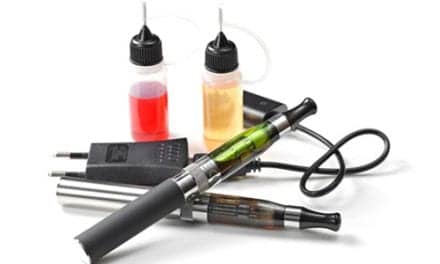Dual-use of cigarettes and e-cigarettes is not an effective way to safeguard health and more evidence that tobacco use is harmful.
RT’s Three Key Takeaways
- Dual-Use Risk: Adults who use both cigarettes and e-cigarettes experience similar levels of toxic exposure as those who smoke cigarettes alone, offering no health advantage.
- No Safety Benefit: The study found that intensity of e-cigarette use did not lower toxicant levels in dual users, challenging the perception that combining both products helps reduce harm.
- Policy and Awareness: Researchers urge stronger tobacco control policies and public education to combat misconceptions about dual use and support proven cessation strategies.
A new study led by American Cancer Society (ACS) researchers shows adults in the United States using combustible cigarettes and electronic cigarettes (e-cigarettes), commonly referred to as dual-use, experienced the same tobacco-related nicotine and toxicant exposure compared to using cigarettes alone at the same intensity. This exposure indicates potential for cancer, cardiovascular, reproductive/developmental, and respiratory harms, according to findings published in Nicotine and Tobacco Research (NTR).
“In the US, dual-use of combustible cigarettes and e-cigarettes is the most common multiple tobacco-use behavior. Some individuals try to cut back on cigarettes or work toward quitting cigarettes this way,” said Zheng (Ashley) Xue, senior associate scientist, tobacco control research at the American Cancer Society and lead author of the study. “However, our results highlight that dual-use is not an effective way to safeguard health and more evidence that tobacco use is harmful.”
Researchers analyzed data from 2,679 adult participants from Wave 5 of the Population Assessment on Tobacco and Health (PATH) study involving a nationally representative cohort of adults and youth in the U.S. Researchers examined exposure to four major classes of tobacco product constituents associated with tobacco-related diseases (e.g., cancer) among individuals who reported dual use of cigarettes and e-cigarettes compared to those reporting exclusive use of either product. Scientists compared biomarkers of exposure (BOE) based on a novel exploratory approach of using the measures of self-reported intensity of use and separating individuals into high/low levels of cigarette smoking and e-cigarette use.
Study results showed individuals reporting dual use did not differ from those reporting exclusive use of combustible cigarettes per day or CPD (13.1 vs. 11.8, respectively). Dual-use groups with high CPD had increased levels of a tobacco-specific nitrosamine and three volatile organic compounds compared to those with low CPD; no influence of intensity of e-cigarette use was observed on BOE for those reporting dual-use. Cigarette use (dual or exclusive use) was generally associated with higher BOE than exclusive e-cigarette use, though metal exposure did not differ between groups. “Clinicians and public health practitioners should increase awareness that dual use of cigarettes and e-cigarettes is not safe and may present similar risks as continuing to smoke cigarettes, especially if one does not reduce the number of cigarettes smoked,” Xue added.
“It’s essential that we continue to advocate for policies that have been proven to reduce tobacco usage,” said Lisa A. Lacasse, president of ACS’s advocacy affiliate, the American Cancer Society Cancer Action Network (ACS CAN). “We will continue to work with federal, state, and local lawmakers to pass strong laws and implement critical regulations that will increase access to barrier-free, culturally competent proven cessation services, end the sale of all flavored tobacco products, substantially increase tobacco taxes, and implement comprehensive smoke-free policies. These fact-based tobacco prevention and cessation programs are critical to help those addicted to quit and prevent anyone, especially youth, from ever starting. Additionally, the FDA must use the full weight of its authority to regulate all tobacco products, including removing the thousands of illegal products on the market that have not been shown to benefit the public health.”
Source: American Cancer Society








